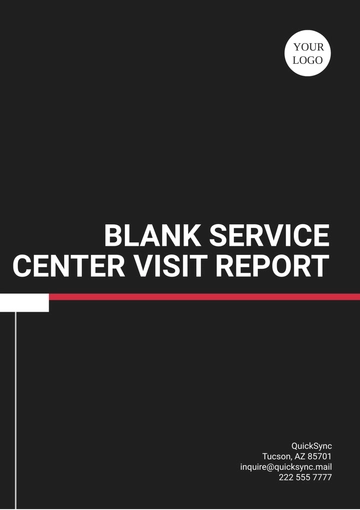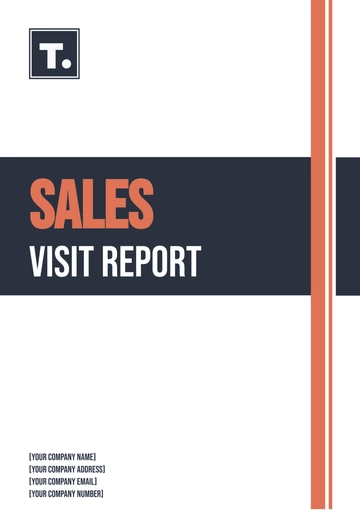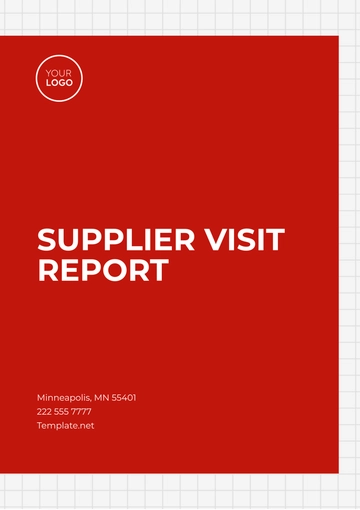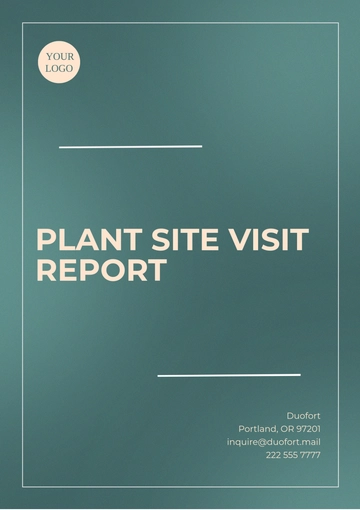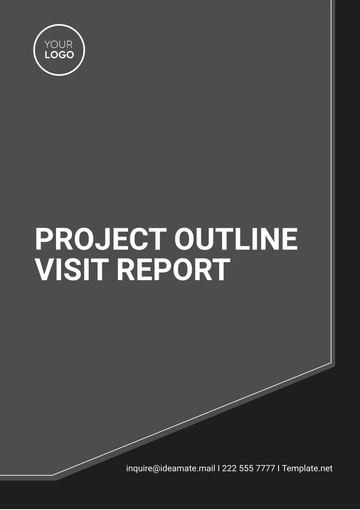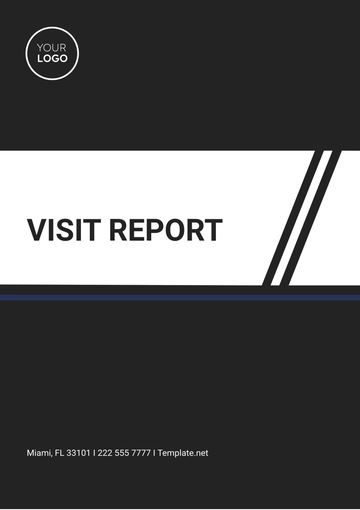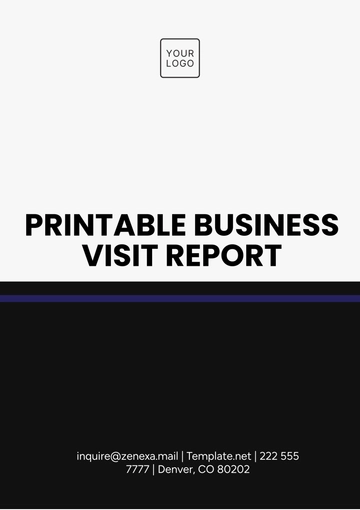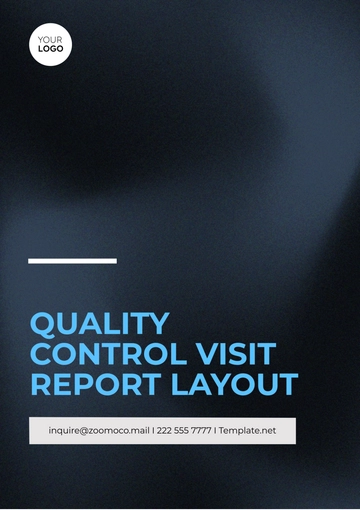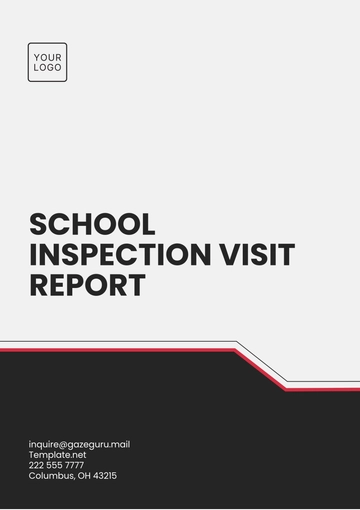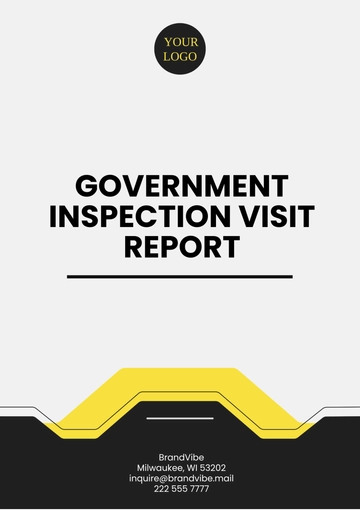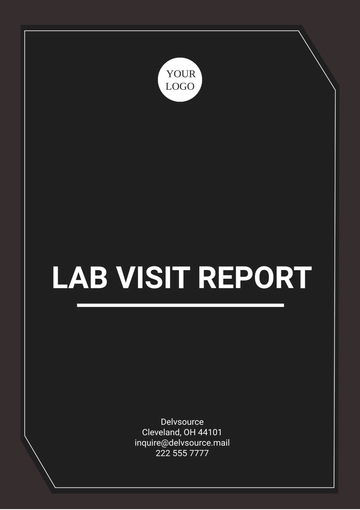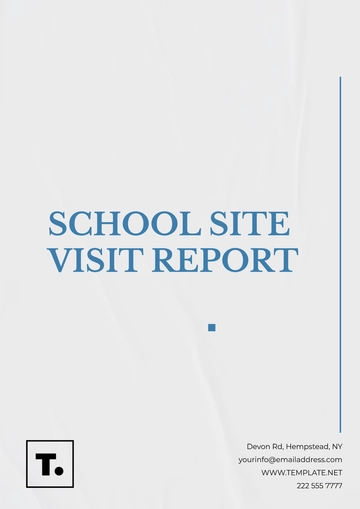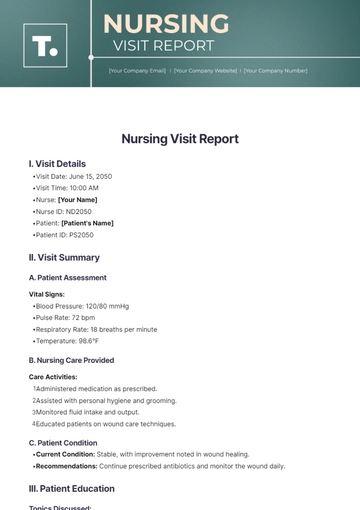Free Visit Report
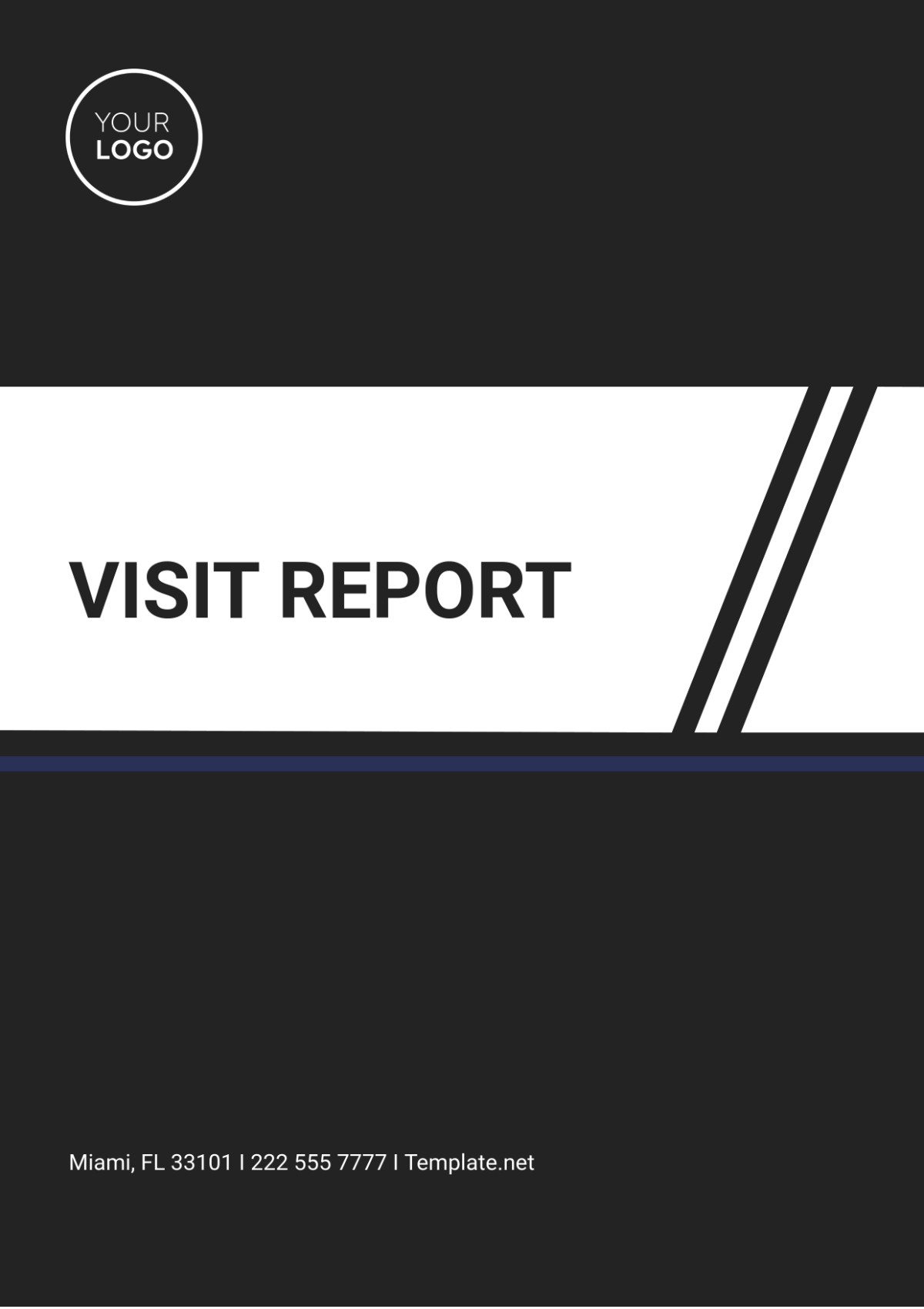
I. Introduction
This Visit Report summarizes the assessment conducted at [Your Company Name] to evaluate the production processes and compliance with safety regulations. The visit aimed to identify areas for improvement and ensure alignment with industry standards. As the manufacturing sector evolves, adapting to new technologies and methodologies is crucial for maintaining competitiveness and operational excellence.
II. Date and Location
Date of Visit: September 25, 2050
Location: [Your Company Name], [Your Company Address]
III. Participants
Katherine Connel
Operations ManagerRole: Overseeing day-to-day operations and ensuring production goals are met.
Jamie Crooks
Quality Assurance SpecialistRole: Responsible for maintaining product quality standards and conducting inspections.
Brenda Boyle
Safety OfficerRole: Ensures compliance with safety regulations and oversees employee training on safety protocols.
Zena Frami
ConsultantRole: External consultant hired to provide insights into operational efficiency and safety practices.
IV. Observations/Findings
A. Production Efficiency
Current Performance:
The facility operates at 85% efficiency, slightly below the industry standard of 90%. While functional, the current production system shows signs of strain under increased demand.
Bottlenecks:
Bottlenecks were observed in the assembly line, particularly in the packaging section. The machinery used in this area appears outdated and frequently requires maintenance, leading to delays. The workflow layout could also be optimized for better flow and reduced handling times.
B. Safety Compliance
Safety Protocols:
Safety protocols were generally followed, but several employees were noted not wearing the required PPE (Personal Protective Equipment), particularly in the assembly area.
Emergency Preparedness:
Emergency exits were accessible, but exit signage needs to be more visible. Conducting regular safety drills would ensure that employees are well-prepared in the event of an emergency.
C. Quality Control
Regular Inspections:
Quality checks are performed regularly; however, a lack of documentation was noted for several batches, making it difficult to track quality over time. This can lead to challenges in identifying the root cause of defects when they occur.
Product Consistency:
Although most products meet quality standards, variability in production was noted, suggesting a need for tighter controls during the manufacturing process.
D. Employee Feedback
Workload Concerns:
Employees expressed concerns about workload and the need for additional training on new equipment. Many team members reported feeling overwhelmed during peak production times.
Training Gaps:
The current training program does not sufficiently cover the new machinery introduced last year, leading to reduced efficiency and increased error rates.
V. Recommendations
A. Enhance Production Processes
Workflow Optimization:
Analyze the assembly line workflow to identify and eliminate bottlenecks, especially in the packaging area. Consider implementing lean manufacturing principles, which can help streamline processes and reduce waste.
Upgrade Equipment:
Invest in new packaging machinery to improve efficiency and reduce maintenance issues. A cost-benefit analysis should be conducted to determine the potential return on investment.
B. Strengthen Safety Measures
Mandatory Training:
Conduct mandatory training sessions on PPE compliance for all employees. This training should emphasize the importance of safety in the workplace and ensure that all staff members understand the required protocols.
Visibility Enhancements:
Improve the visibility of exit signage and conduct regular safety drills. Consider installing additional emergency lighting to guide employees during a power outage.
C. Improve Quality Documentation
Robust Documentation System:
Develop a more robust documentation system for quality checks to ensure traceability and accountability. Implementing digital tracking systems can help maintain accurate records of inspections and product batches.
Standard Operating Procedures:
Review and update standard operating procedures (SOPs) to ensure they reflect the latest best practices in quality control.
D. Address Employee Concerns
Feedback Mechanism:
Implement regular feedback sessions to address employee concerns and provide necessary training programs on new equipment. This will foster a culture of open communication and continuous improvement.
Training Programs:
Introduce comprehensive training programs that focus on new equipment and production techniques. This will help alleviate workload concerns and enhance overall team performance.
VI. Conclusion
The visit to the [Your Company Name] provided valuable insights into current operations, highlighting both strengths and areas needing improvement. By implementing the recommendations outlined in this report, the facility can enhance production efficiency, ensure compliance with safety standards, and improve overall quality management. Moving forward, the organization needs to adapt to changing industry demands and invest in employee development and modern technologies.
VII. Appendices
Appendix A: Photos of the production area (includes images of machinery and workflow).
Appendix B: Safety inspection checklist (detailing compliance measures and findings).
Appendix C: Employee feedback summary (anonymized responses from employee surveys).
Appendix D: Industry efficiency benchmarks (comparison with competitors and industry standards).
- 100% Customizable, free editor
- Access 1 Million+ Templates, photo’s & graphics
- Download or share as a template
- Click and replace photos, graphics, text, backgrounds
- Resize, crop, AI write & more
- Access advanced editor
Easily create comprehensive visit reports with our Visit Report Template from Template.net. This editable and customizable template is perfect for documenting key observations during your visits. You can quickly tailor the content to fit your needs, ensuring accurate reporting. Editable in our Ai Editor Tool, it allows for hassle-free adjustments so that you can generate a professional visit report every time.
You may also like
- Sales Report
- Daily Report
- Project Report
- Business Report
- Weekly Report
- Incident Report
- Annual Report
- Report Layout
- Report Design
- Progress Report
- Marketing Report
- Company Report
- Monthly Report
- Audit Report
- Status Report
- School Report
- Reports Hr
- Management Report
- Project Status Report
- Handover Report
- Health And Safety Report
- Restaurant Report
- Construction Report
- Research Report
- Evaluation Report
- Investigation Report
- Employee Report
- Advertising Report
- Weekly Status Report
- Project Management Report
- Finance Report
- Service Report
- Technical Report
- Meeting Report
- Quarterly Report
- Inspection Report
- Medical Report
- Test Report
- Summary Report
- Inventory Report
- Valuation Report
- Operations Report
- Payroll Report
- Training Report
- Job Report
- Case Report
- Performance Report
- Board Report
- Internal Audit Report
- Student Report
- Monthly Management Report
- Small Business Report
- Accident Report
- Call Center Report
- Activity Report
- IT and Software Report
- Internship Report
- Visit Report
- Product Report
- Book Report
- Property Report
- Recruitment Report
- University Report
- Event Report
- SEO Report
- Conference Report
- Narrative Report
- Nursing Home Report
- Preschool Report
- Call Report
- Customer Report
- Employee Incident Report
- Accomplishment Report
- Social Media Report
- Work From Home Report
- Security Report
- Damage Report
- Quality Report
- Internal Report
- Nurse Report
- Real Estate Report
- Hotel Report
- Equipment Report
- Credit Report
- Field Report
- Non Profit Report
- Maintenance Report
- News Report
- Survey Report
- Executive Report
- Law Firm Report
- Advertising Agency Report
- Interior Design Report
- Travel Agency Report
- Stock Report
- Salon Report
- Bug Report
- Workplace Report
- Action Report
- Investor Report
- Cleaning Services Report
- Consulting Report
- Freelancer Report
- Site Visit Report
- Trip Report
- Classroom Observation Report
- Vehicle Report
- Final Report
- Software Report


